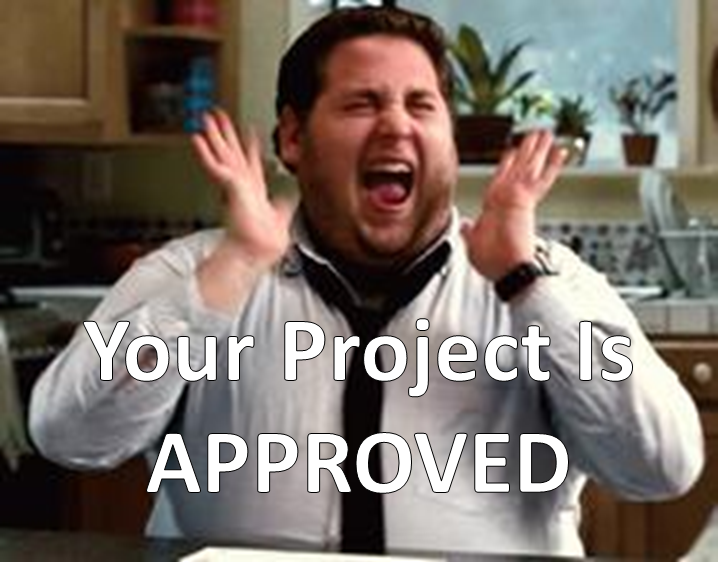|
This episode covers insights by Quality Executive Robert Lahaderne as he shares his perspective on the impact Root Cause makes to a medical device organization when it is done correct versus when it is done incorrectly.
#medicaldevice #medtech #rootcause
0 Comments
In this episode we cover Medical Device Management Top Grading tips with Peter Nalbach, VP & GM, in Orange County, CA. Listen in as Pete outlines his 3-step process to align and bring in the right people to help move the company forward while simultaneously overcoming product challenges throughout the lifecycle process.
#management #medtech #medicaldevice #people #topgrading #leadership #snapshot Want to get through your remediation project successfully? Doing these two things helps dramatically increase your chances of success. #fearlessmedtech #remediation #fda #medicaldevice #medtech #quality #compliance #QMS Remediation in the medical device industry is often described as a matter of “it’s not if it will happen, it’s when it will happen”. With so many companies over the years going through major remediation efforts one would think by now most people in the business would have a good appreciation for what success looks like to navigate through FDA remediation projects. Yet, many people will tell you the remediation projects they’ve been a part of were messy, unorganized and a galactic waste of money. Unfortunately, when we’re faced with remediation there is no choice other than to mend our broken wings before flying home for the summer. This sparks an interesting question – if I have a remediation project ready to deploy what are the things I can do to ensure it succeeds? Regardless of the project size implementing these six keys to success will drastically help increase your ability to successful execute on your next remediation project: 1. Ensure Your Entire Company (Especially Executive Management) is Onboard Everyone in the organization, bottom up, needs to understand why this project just went to the top of the work list. Everyone needs to be bought in and rowing in the same direction, otherwise you’ll experience cumbersome internal issues as mentioned above, which waste time, money and energy. One can accomplish by using a tactical scorecard as described in #4. 2. Establish Clear, Consistent and Easy Communication Protocols for the Project Once your entire management team and company is onboard its time to set expectations for communication. This is one of the most overlooked parts of any large scale project. It’s especially important when considering cross functional company divisions and the people accountable to working towards successful completion. When people are misinformed or don’t know what’s going on you can be certain it will slow your project down and cause further product quality and procedural issues down the road. 3. Get a Lobbyist You’ll need someone acting as the liaison between your company and the FDA. Typically, this person comes from your QA/ RA group, but is that the right person? Don’t assume your de facto executive in QA / RA is the best for the job. Ensure your company aligns itself with a proven individual who has relationships within the FDA and knows how to play the game. If necessary get a consultant to support this effort. This will pay off huge dividends in the end as they’ll know how to navigate delicate situations, get continuances and or leniencies where able. 4. Employ a Tactical Scorecard Remediation projects can quickly run off the rails if leadership isn’t hyper focused on tangible execution. When projects span an entire organization involving dozens of resources and a multitude of external suppliers its easy for things to get lost in the shuffle causing delays and confusion among the troops. To overcome this challenge utilize a tactical scorecard which everyone in management has access too along with anyone who is in a lead role for the remediation project. It’s a project charter and Gantt Chart combined into one, just simplified. This scorecard should breakdown the project into four or five key areas as necessary, but no more than five. Each of these project areas act as a cost center of sorts for accountability. Within each area you’ll have the activities coming up in the next 30 days, deliverable dates and the people who own the work. A process like this creates transparency while providing clear direction. The key stakeholders should meet at least monthly, if not earlier, to review the status of the project in comparison to the scorecard. SCRUM style meetings offer a good approach for transparency and accountability. 5. Learn How to Manage Cost Early On Often companies will use a consulting group to lead or help work through their remediation efforts. All too often the selection process for that supplier comes down to a key relationship within the company which basically side tracks any formal vetting process of other possible suppliers. Cost becomes a 2nd or 3rd consideration over a relationship. This can be disastrous as selecting the wrong supplier to help you with a remediation project can end up costing you thousands, if not hundreds of thousands, of dollars extra down the road. Case in point – when you use suppliers that fly in consultants you are literally paying more than double the cost for that service just because those resources weren’t local. Flights, housing, food, per diems, auto, travel, etc. adds up incredibly fast. I’ll admit, sometimes the best solution is an out-of-town supplier, however be sure to do your homework before you settle on the one supplier that’s going to get your company back on track. 6. Know the Difference Between Execution & Strategy As mentioned above, companies use consultants because it’s a good way to get ahead of a remediation project with people who have been there an done it before. It momentarily expands your bandwidth for as long as you need. While that sounds lovely there is a downside to the consulting and client relationship – the difference between strategy and execution. Some consulting companies bill themselves as experts and charge big prices to boot. What many companies find out the hard way is that these overpriced consulting firms stay up in the stratosphere where strategy is best played and seldom come down to the ground level to get their hands dirty. This means they can put a plan together but executing on it is another story all together. If you’re going to use a consulting firm make sure your contract includes deliverables which focus on execution and completion of work. Key Take Away: If you’re heading into an FDA remediation project it is paramount to set up a company wide communication protocol which provides direction and project updates in real time. Action Item: Remember – it’s not ‘if’ but ‘when’ you’ll find yourself in a situation where you’re stuck going through remediation. Therefore, you must be proactive. Before you need the help, begin compiling data on suppliers that could help with a possible remediation project. Compare their capabilities, learn how they would approach a potential project, how do they charge, etc. Once you’ve done your homework you’ll then have all the necessary information upfront to make a strategic and informed decision when it comes time to dive into remediation. Could You Live Fearlessly?2/15/2021 Imagine a life that is totally different from the one we know today. A life where disease and medical disorders are not commonplace. A life where medical afflictions no longer claim lives. It’s a wild thought, we know. It is our utopia! Now think about this utopia in comparison to where we are at today. In 2019, roughly 58 million people died worldwide of which 74% of those deaths (or 43 million people) were the result of noncommunicable diseases like heart disease, stroke and COPD. Imagine what the world would be like if all of those people, our family, friends and colleagues, were still with us. It’s a sobering and certainly emotional thought! But how could we ever achieve such a utopian life existence? Enter Square-1 Engineering and the greater life science industry. As I write this I’ll humbly admit there will inevitably be people who read these statements and think we’re absurd or even delusional for thinking we could ever achieve a life without disease and medical disorders. That said, it would also be prudent to note the purpose of this statement is not about our company, it’s not a sales pitch or a ‘look at what we’re doing’ ploy. It’s about an unrealized opportunity we need your help with as we believe it to be our responsibility to spread the word. Our utopia is indeed possible and it will take all of us, both within the life sciences industry and outside, to work together towards a greater goal. This greater goal, which we’ve defined by Square-1’s company vision, is to achieve a life where ‘medical technology has created a new quality of life empowering people to live fearlessly’. Fearlessly! Our company, like many others, is on a quest to change the world as we know it for the better. How are we going to do this you ask? We’ll achieve this through the advancement of medical technology. Along with many other companies in the life science industry, our focus is to drive change and innovation so that we can continue to inch closure to a state in the future where the way we live as people is better than today. Hopefully without disease and medical disorder. Imagine again if all heath care afflictions were in fact eradicated. The fear many of us live with as a result of the daily health issues we struggle with would also cease to exist. Rather than harboring fear we could spend our time focused on a life filled with optimistic gratefulness. We know our ambitions are colossal, even unimaginable at times yet this is exactly what keeps us going. It’s for this reason we’ve made it our mission to put all our time and energy into advancing medical technologies to improve patient lives today so we can in the future meet our utopia, a world rid of disease and disorder. Could you live fearlessly? Join us on our mission and learn more about some of the great companies who are pushing the boundaries of what’s possible in order to create a better tomorrow. A fearless tomorrow. Our utopia! Medtronic: https://www.medtronic.com/us-en/about/mission.html Edwards Lifesciences: https://www.edwards.com/aboutus/credo# Staar Surgical: https://staar.com/our-mission Square-1 Engineering: http://www.sqr1services.com/vision-mission.html Axonics Modulation Technologies: https://www.axonics.com/about-axonics/who-we-are Diality: https://www.diality.com/diality #fearlessmedtech Get Your Boss to Approve Your Idea12/8/2020 You’ve got an idea! Maybe it’s to optimize a process, save the company money or to develop a new product. Many of us at one point or another in our careers will come across this situation where we have a brilliant idea but we don’t know how to implement it. Once we have the idea what we do after the fact is what makes or breaks our ability to turn into reality.
The steps below can help you organize your thoughts in a formal manner so you can further vet your idea while positioning yourself (and of course your idea) for the best possible chance to get approval from the powers that be. Step #1 – Develop A Business Case A business case captures the reasoning for initiating a project or task. It is often presented in a formatted written document outlining everything from the reason for the project, problem(s) it solves and the ROI. Components of a business case document may include:
Once you’ve compiled your business case now it’s time to present it. Set a meeting with your boss, or the appropriate party who would most likely approve your idea and or project. Inform them ahead of time what the purpose of the meeting is and arrive prepared with multiple copies of your business case both to reference and present from. Leave the approver with a copy of your business case and an action item to keep them engaged and thinking about your presentation. Well look at that! You did such a good job compiling your thoughts and presenting your idea that your boss granted you approval to move forward in the project. Excelsior! Now that you have approval, which is a fancy way of saying “we like your idea enough to put money behind it”, you will need to build out the project in detail using a ‘Project Charter’ to ensure it meets a successful conclusion. Note: What’s the difference between a ‘Business Case’ and a ‘Project Charter’? A business case comes first as it is an assessment or feasibility study of an idea or task; the sponsor (person who has the idea) pitches their case to the funding stakeholders (typically your boss or people in management). If approved, a project charter is completed outlining the project in detail. The information within the charter is the constraints for which success will be measured. Step #2 – Develop a Project Charter As mentioned above, the project charter is a document which clearly defines the project scope, objectives, and participants involved. Components of a project charter may include:
You’ll note that much of the work that was done initially for the business case can in turn be used in completing the project charter. If your project is big enough it may be worth looking into project management software, like Basecamp or JIRA, to electronically track your projects activities and deliverables. Now that you’ve got your main documents guiding you through the project out of the way the next step will be to kick off the project and get underway. I recommend doing the kickoff meeting in person if possible, or via video conference call, where the team can openly talk about the needs of the project and how tasks will be divided up. All resources involved in the project should have a copy of the project charter along with clear expectations on what their role is and timeframe to deliver those tasks. Now that you have a basic foundation for what is needed to get your projects approved and kicked off the next step is to look into resources like the Project Management Institute (PMI) and their primary resource guide called Project Management Body of Knowledge (PMBOK). These resources will help you stay on track while providing vast amounts of information on how to move projects through to successful completion. Prepare for the Unexpected10/19/2020 We've talked on a couple occasions about the importance of planning ahead. When it comes to your business and the safety of your employees planning ahead for emergency situations is a must for all leaders and business owners, alike. Listen in as our Operations Manager, Trisha Aure, shares with us in this two part series why it's so important to have an ERP (Emergency Response Plan) in place and the steps to go about implementing one within your business. Part 1: ERP Overview & Initiation Now that we're aware of what an ERP can do for us and how to initiate it from scratch, let's look further into the implementation for an ERP. Part 2: ERP Implementation Continued Did you miss our article on Emergency Response Plans (ERP)? Access it here: http://www.sqr1services.com/white-papers-and-articles/why-you-need-to-implement-a-business-emergency-response-plan-immediately Dealing With Awkwardness in Negotiations6/22/2020 Negotiations can be uncomfortable. How we deal with those moments of awkwardness and discomfort makes or breaks our experience and of course the end result. Here's why...
Visit Square-1 Engineering's Resources Library for additional white papers, articles and videos covering a broad range of content from product design, supplier relationships to leadership. http://www.sqr1services.com/resource-library.html #square1engineering #square1 #engineering #lifescience #consulting #negotiation #advice #business #strategy Opening Salvo: Consulting, it’s the next big business opportunity frontier. From 2011 to present the consulting industry grew by 4-5% YOY on the coattails of increasing supply and demand. More people than ever on record have transitioned out of traditional career roles in the last 15 years to chase the ‘gig economy’ (increasing supply) while companies themselves have developed a steady dependency (increasing demand) on using external support to ensure their operations run effectively and efficiently. While this sounds encouraging, an unexpected outcome of this growth has left many customers with buyers remorse. As more people enter the consulting game the varying levels of experience, service, costs and related outcomes has left customers in a predicament. With a multitude of options now available to companies looking for help one of the biggest challenges afflicting buyers is how they will find the right support while ensuring the money they’re paying for it results in a positive outcome. Author: Travis Smith To view the full article click on the download link below:
About the AuthorTravis Smith is the founder and managing director of Square-1 Engineering, a medical device consulting firm, providing end to end engineering and compliance services. He successfully served the life sciences marketplace in SoCal for over 15 years and has been recognized as a ‘40 Under 40’ honoree by the Greater Irvine Chamber of Commerce as a top leader in Orange County, CA. Categories
All
Archives
April 2024
|
||||||
Visit Square-1's
|
|







 RSS Feed
RSS Feed


